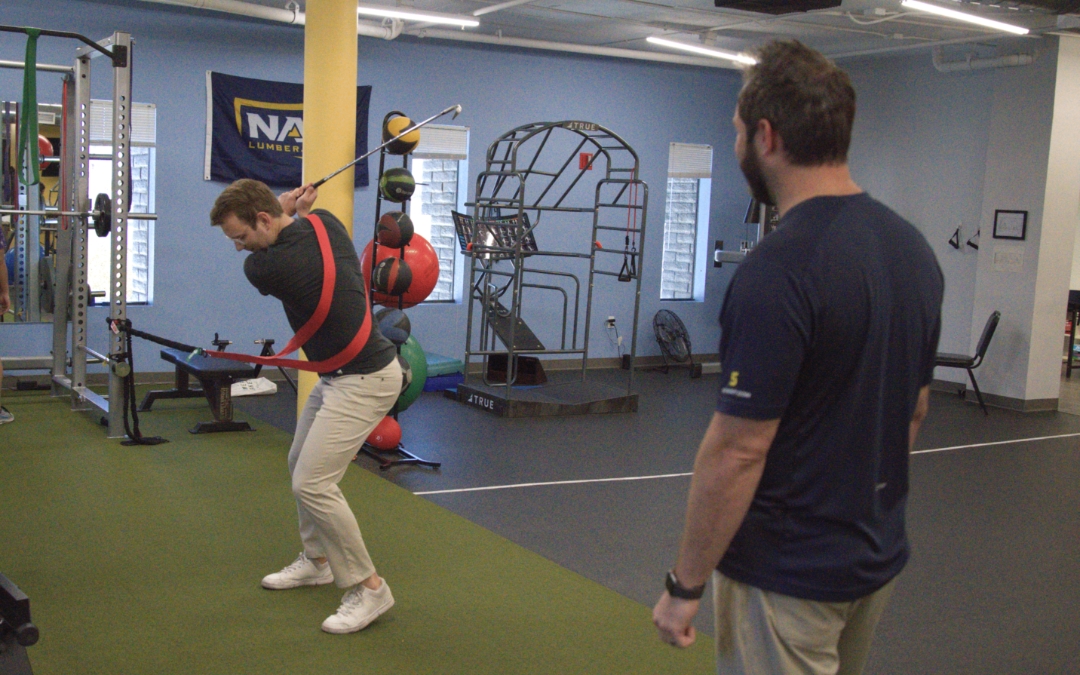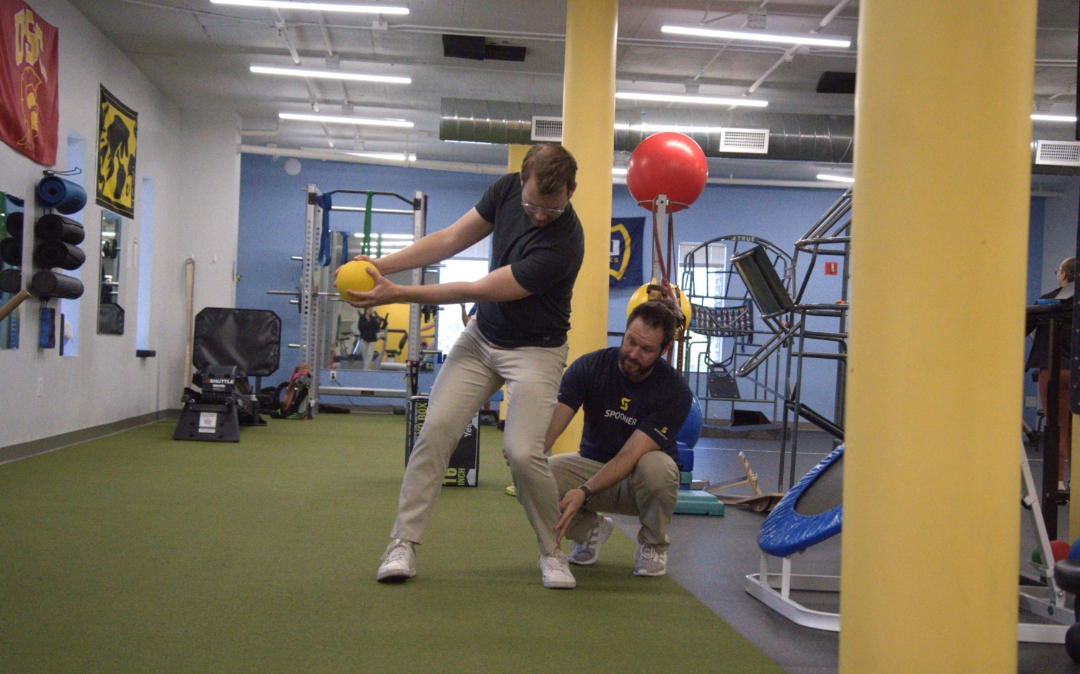By: Paul Arthur, PT, DPT, SCS, COMT, ATC
Any injury or surgery poses a risk of taking you off the green. The return to golf is progressive, and it takes time to recalibrate your body to swing to its pre-injury or pre-surgery ability as well as have the endurance to play an entire 18 holes.
The Swing
When addressing the golf ball, your whole body is active and engaged.
During the backswing, you generate a great deal of potential energy into the club. The trunk and upper back muscles are working to pull up the club with enough force while your hips are internally and externally rotating to easily lead you into the downswing.
As your club accelerates to meet the ball, the potential energy is transferred to kinetic energy. The windup of your arms during the backswing is released. Your body moves a great deal to control this energy; as the weight shifts, the hips rotate, and the glutes contract to elicit a pelvis rotation towards the target.
When your club meets the ball, all of the energy that you generated during the downswing is transferred unto the ball. Also, your pectoral muscles, glutes, and quads are all active to help you maintain your form as you follow through.
Your rotator cuffs are engaged the most after impact as you reach the height of your swing. Your weight has fully shifted, and your hips have fully rotated.
Your whole body is working in golf. If one part of your body has undergone surgery or is injured, it can affect your game.
The Impact of Surgery
Total joint replacements- such as hip, knee, or shoulder- will result in loss of mobility and pain post operatively. Both hip and knee replacements can impact your ability to effectively shift your weight and rotate to generate and exert force while swinging. As for shoulder replacements, the swing itself and the path of the club can be altered due to loss of mobility and pain.
This does not, however, mean that you are removed from golf forever if you undergo surgery or have an injury. While there may be a recovery period, getting back on the green is important! However, you need to build up both strength and endurance to your pre-op or pre-injury status.
Strength
The surgeon’s guidelines or protocol should always be followed, and your overall progress will determine when you can begin golf activities. Research shows putting can begin around 4 weeks post-op for knee and hip replacements.
Because of the loss of mobility and strength you will experience, it is important to progressively load at the driving range. This means you will increase your frequency, resistance, or repetitions over time as you heal. The putter does not put as much torque on your body compared to irons and driver. Begin with light chipping around the green and then you can start working with your iron around 10-12 weeks post op.

Half swings are a great place to start to work on your mechanics while also keeping the stresses on your body low. For this, you will perform your swing with 50% of the motion and 50% of the speed. Progressively increase the range of motion keeping the speed about 50% until you are at a full swing. Once you have a full swing for each club, you can work on increasing your speed till you are at 100%. A physical therapist can help coach you through this and work with you on exercises that look and feel like golf.
Endurance
Endurance is often an overlooked aspect of golf. We often just think about returning to swinging, but any extended time away from regularly playing a full round of golf will impact your endurance with the sport. It takes a long time to finish a course. Remember, you are walking close to a mile, standing for nearly 3 hours, getting in and out of the golf cart, standing up and crouching down countless times, and more. There is an amazing amount of movement in this sport.
Spooner physical therapists are experts in understanding the intricacies of your sport. We are on your team to help you have the endurance to play 18 holes. Often, this looks like swapping out the normal 10 reps for 3 sets of an exercise to higher reps or for time to work on the endurance. You will be getting up out of your cart at least 50 times, you will be swinging a club at least 50 times, and you will be bending over or stopping to pick up your golf ball at least 36 times. Having a physical therapist help you prepare for this can help you return to the green faster and stronger. We can also help with addressing any root causes that may cause other injuries and keep you on the course!
Schedule an appointment with a Spooner therapist today!
References
- Papaliodis DN, Photopoulos CD, Mehran N, Banffy MB, Tibone JE. Return to Golfing Activity After Joint Arthroplasty. The American Journal of Sports Medicine. 2017;45(1):243-249. doi:10.1177/0363546516641917. https://pubmed.ncbi.nlm.nih.gov/27159289/

